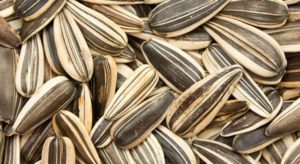 Biomimicry has revealed ways that nature can be copied to create new products and improve existing ones. Recently, a team of researchers from the University of New Hampshire in the U.S. has shown how the seed coats of certain plants could help in the development of flexible materials that are strong and resilient.
Biomimicry has revealed ways that nature can be copied to create new products and improve existing ones. Recently, a team of researchers from the University of New Hampshire in the U.S. has shown how the seed coats of certain plants could help in the development of flexible materials that are strong and resilient.
An article in www.materialstoday.com described the study. Plant seed coats act to protect the seed inside, but they need to be soft enough so that the seeds can germinate. This requires a change in their mechanical property. The seed coats studied revealed building blocks of epidermal cells in the shape of a star that move using zigzag intercellular joints, making a tight, tiled shell structure that protects the seed from damage and environmental stresses, including drought and freezing, as well as bacterial infection.
Using 3D printing, a multi-material prototype, based on the mosaic-like tiled structures of the seed coat of succulents and some grasses, was produced that could provide the foundation of smart materials that are sufficiently robust to be used in body armor, screens and even the panels of airlines.
The researchers looked to develop an architecture for a smart material that could be programmed to augment the strength and toughness of a seed coat, as well as be flexible enough for a range of applications. Researcher Yaning Li said, “Imagine a window, or the exterior of an airplane, that is really strong but not brittle. That same concept could create smart material that could be adapted to behave differently in different situations.”
The research was published in Advanced Materials.
 TEXTILES.ORG
TEXTILES.ORG


